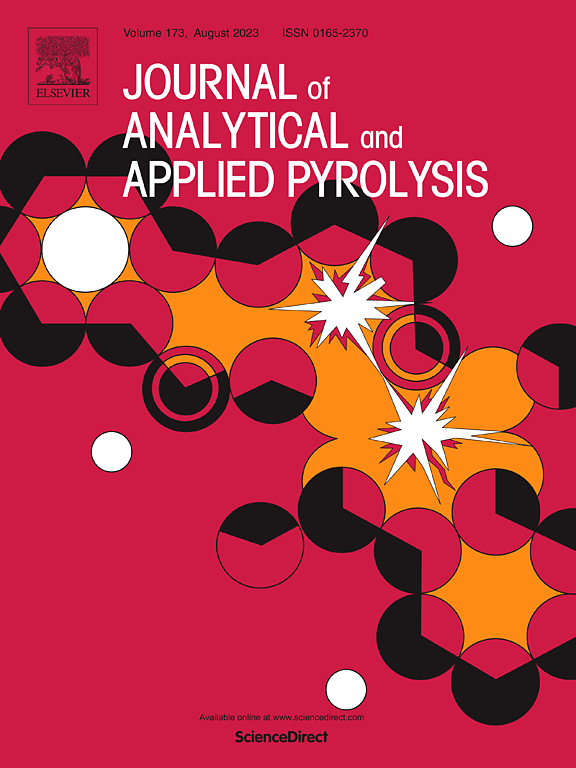IF 5.8
2区 化学
Q1 CHEMISTRY, ANALYTICAL
引用次数: 0
摘要
木质纤维素生物质还原催化分馏(RCF)可产生富含酚类的木质素油和碳水化合物纸浆,但纸浆的利用通常需要催化剂分离。本研究介绍了一种将 RCF 与微波辅助热解(RCF-MAP)相结合的集成工艺,无需催化剂分离即可实现生物质的完全增值。利用 Ni/AC,RCF 可生成富含酚类的木质素油和高质量的碳水化合物浆。RCF 衍生的碳水化合物纸浆可直接进行微波辅助热解,产生的合成气产量为 49.5 wt%,H2 与 CO 的比例高达约 1:1,适合进行加氢甲酰化。Ni/AC 催化剂可回收到 MAP 工艺中,避免了传统热解工艺中出现的失活现象。在线气体分析表明,微波环境增强了液体产品的二次裂解,促进了氢的形成。质量流量分析表明,桦木生物质可产生约 18.9 wt% 的木质素油、29.6 wt% 的合成气(H2 和 CO)、20.1 wt% 的生物油和 4.9 wt% 的焦炭。这种 RCF-MAP 集成方法可高效生产酚类化学品和优质合成气,支持对所有生物质馏分进行工业规模的利用。本文章由计算机程序翻译,如有差异,请以英文原文为准。
Complete valorization of lignocellulosic biomass through integrated reductive catalytic fractionation and microwave-assisted pyrolysis
Reductive catalytic fractionation (RCF) of lignocellulosic biomass produces phenolic-rich lignin oil and carbohydrate pulp, but catalyst separation is usually required for pulp utilization. This study introduces an integrated process combining RCF with microwave-assisted pyrolysis (RCF-MAP), enabling complete biomass valorization without catalyst separation. Using Ni/AC, RCF generates phenolic-rich lignin oil and high-quality carbohydrate pulp. The RCF-derived carbohydrate pulp can be directly subjected to microwave-assisted pyrolysis, producing syngas yields of 49.5 wt% with a high H2 to CO ratio of approximately 1:1, suitable for hydroformylation. The Ni/AC catalyst can be recycled back into the MAP process, preventing deactivation seen in conventional thermal pyrolysis. On-line gas analysis revealed that the microwave environment enhances secondary cracking of liquid products, contributing to the hydrogen formation. Mass flow analysis reveals that birch biomass yields approximately 18.9 wt% of lignin oil, 29.6 wt% of syngas (H2 and CO), 20.1 wt% of bio-oil, and 4.9 wt% of char. This integrated RCF-MAP approach efficiently produces both phenolic chemicals and high-quality syngas, supporting industrial-scale utilization of all biomass fractions.
求助全文
通过发布文献求助,成功后即可免费获取论文全文。
去求助
来源期刊
CiteScore
9.10
自引率
11.70%
发文量
340
审稿时长
44 days
期刊介绍:
The Journal of Analytical and Applied Pyrolysis (JAAP) is devoted to the publication of papers dealing with innovative applications of pyrolysis processes, the characterization of products related to pyrolysis reactions, and investigations of reaction mechanism. To be considered by JAAP, a manuscript should present significant progress in these topics. The novelty must be satisfactorily argued in the cover letter. A manuscript with a cover letter to the editor not addressing the novelty is likely to be rejected without review.

 求助内容:
求助内容: 应助结果提醒方式:
应助结果提醒方式:


